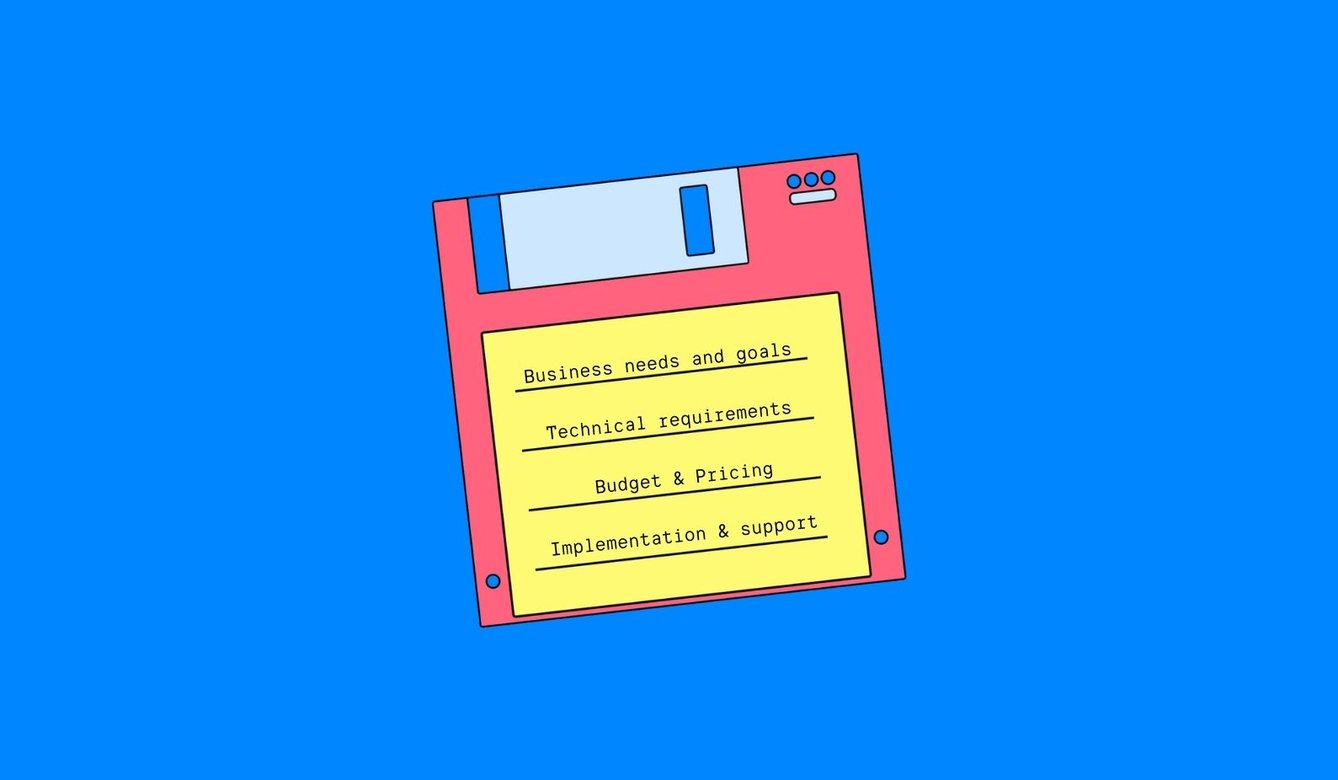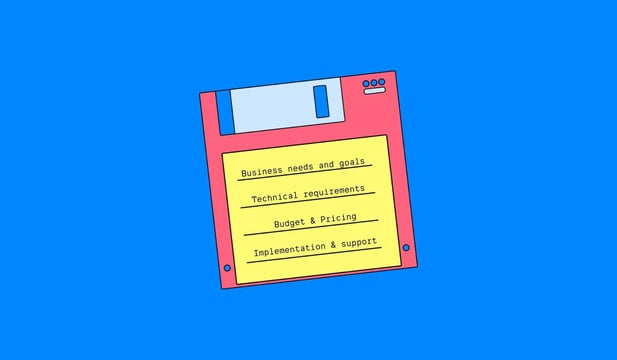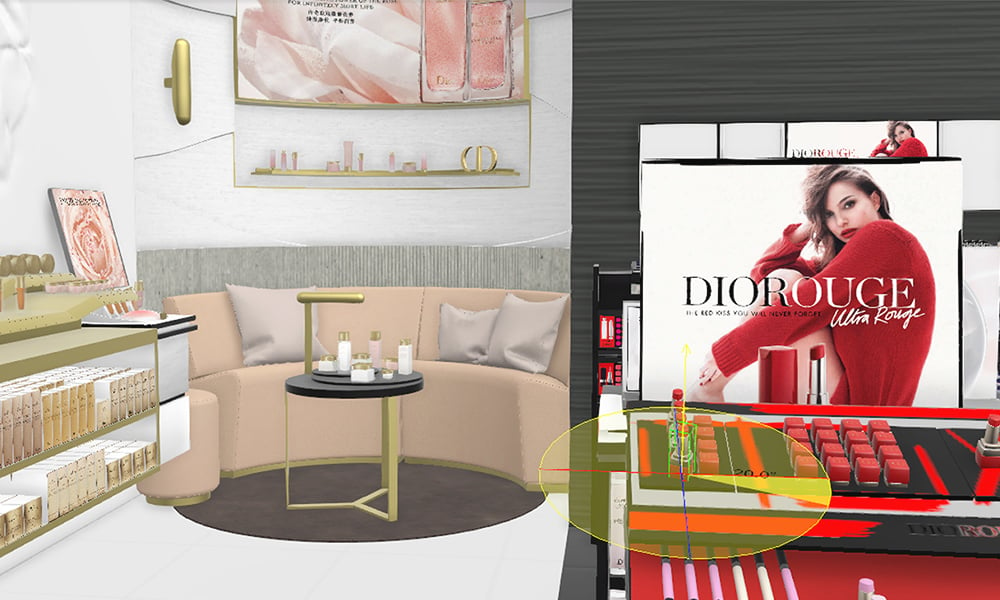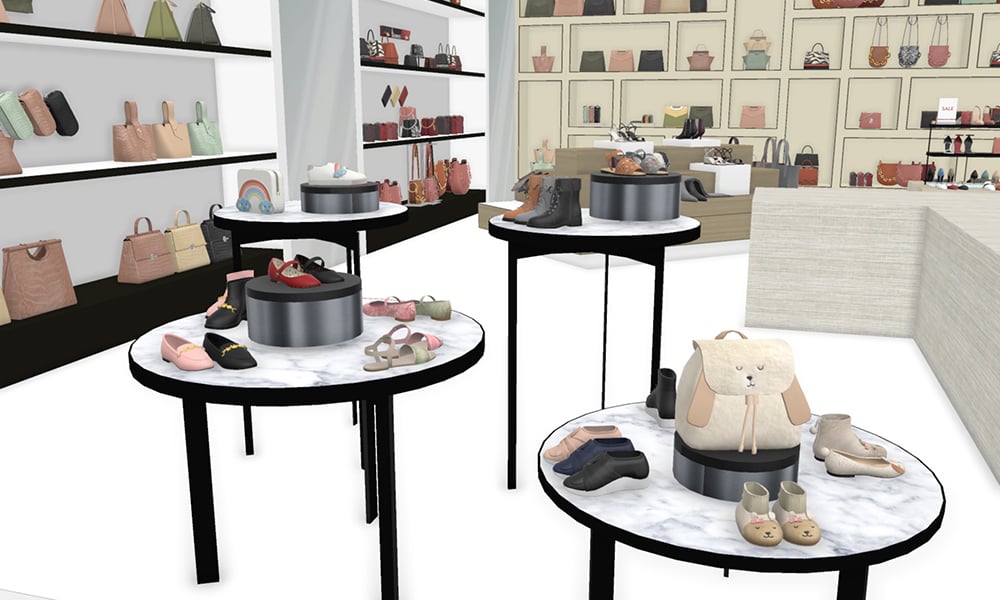How to Digitize the Merchandising Process

How to Digitize the Merchandising Process
In-store merchandising can make or break your customers' shopping experience. A well-organized store with appealing displays can inspire shoppers to browse your store and help them find what they're looking for, ultimately driving sales.
That said, the real magic of retail merchandising happens behind the scenes, well before products hit the shelves. Compelling retail displays are rooted in strong planning and organized processes—which is why investing in digital merchandising systems is crucial to success.
THE BENEFITS OF DIGITIZING THE MERCHANDISING PROCESS
Why go digital with your merchandising? Modernizing your systems and procedures helps you unlock several benefits, including:
Save time and streamline your processes. Digital merchandising processes can lower costs by automating manual tasks like tracking data, organizing assets, and implementing visual merchandising programs. This can free up your team's time to focus on more strategic tasks, such as developing creative displays.
"Automation is your best friend", says Damian Kwinta from the streetwear brand PRM.
"To me, tools that allow for automated visual merchandising based on customer behavior data are the future. They take the guesswork out of the equation and let you focus on what you do best—curating an exceptional product range."
Enhance your data analytics capabilities. Speaking of eliminating guesswork, modern merchandising processes enable you to uncover key metrics such as top-selling products, store zone sales performance, and more.
Having access to actionable insights means you can make strategic decisions based on actual data rather than intuition. This, in turn, makes it easy to optimize your merchandising strategy and drive results.
As Wendy Wang, Owner of the retail store F&J Outdoor, puts it, "By using advanced analytics, retailers can analyze buying trends to optimize product placement and maximize sales."
Offer better shopping experiences. Digital merchandising solutions can also shed light on valuable customer insights that you can leverage to improve in-store interactions.
Wang says, "At F&J Outdoor, reviewing data about our customers' purchasing habits allowed us to tailor our displays, enhancing customer experience and boosting our sales."
In addition, integrating your merchandising solution with stock management software can give you access to real-time inventory data. With the right systems in place, you can ensure that popular items are always in stock. Customers are less likely to encounter out-of-stock situations, which improves their overall shopping experience.
Improve scalability and adaptability. Traditional merchandising processes are difficult to scale. When you're manually planning your planograms or tracking inventory by hand, it's much harder to roll out consistent, efficient strategies across multiple locations.
This is where digital merchandising systems come in. Modern planogram software and store execution tools pave the way for easy implementation of strategies across various stores, ensuring uniformity and efficiency in your retail operations.
These tools also enable you to move faster. When you and your team are equipped with a modern merchandising platform, it's easier to adapt to changing market conditions and stay ahead of the curve.
HOW TO DIGITIZE THE MERCHANDISING PROCESS
Now that we've covered the benefits of modernizing your merchandising practices let's look at the steps you should take to select and implement the right solutions for your business.
1. Assess your needs and evaluate merchandising platforms accordingly
Selecting the ideal merchandising platforms begins with a thorough internal assessment. Before venturing into the market for a new system, evaluate your business needs and take stock of the key features and capabilities you need in a merchandising platform.
Here are a few things to consider:
Business needs and goals. Identify the specific challenges you're currently facing in merchandising. Are you dealing with inefficient workflows? Are you lacking visibility into specific metrics? Consult your merchandising team and ask them to provide a wish list of what they'd like to see in a merchandising platform and go from there.
Beyond your current needs, it's also important to outline your long-term merchandising objectives. For example, if you plan to expand your product range or add new teams and locations, you'll need a solution that can scale with you.
Technical requirements and integrations. Make sure the solution "plays nice" with your existing systems. Assess your current technical infrastructure—including hardware, software, and network capabilities—and set your sights on merchandising platforms that are compatible with what you have.
And if you're using different software and applications (ecommerce, ERP, etc.), see to it that the platforms you choose can integrate seamlessly. That way, you and your team benefit from unified workflows across all your operations.
Remember, tight integrations are vital for maintaining consistency in data, streamlining processes, and avoiding the pitfalls of siloed information.
Budget and pricing. There are two dimensions to evaluating the cost of new software. First is your initial investment. Determine your budget for the merchandising platform by considering the cost of software licenses, implementation fees, and ongoing maintenance.
Secondly, you'll want to factor in your return on investment. Assess the potential ROI of the platform by evaluating how it can improve productivity, reduce costs, and increase sales.
By taking these steps, you can make a financially informed decision that balances upfront costs with long-term benefits. This approach ensures that your investment in a merchandising platform not only fits within your current financial constraints but also contributes to future growth.
Vendor implementation, support, and expertise. Don't forget to ask about the vendor's level of support during implementation. How does the process work? What resources are available to ensure a smooth transition to the new platform? Asking these questions will help you gauge the vendor's commitment to your success and identify any potential pitfalls that may arise during the implementation phase.
It's also important to assess the provider's ongoing training and support programs. Inquire about the frequency and format of training sessions, as well as the availability of support documentation. This will help you ensure that your team is well-equipped to utilize the platform effectively and troubleshoot any issues.
2. Trial or demo the merchandising platform
Already have a solution (or two) in mind? See the platform in action by trialing the software or requesting a demo. That way, you can view the interface firsthand, explore its features, and discover how the platform's capabilities work with your current processes.
Here are some tips to help you get the most out of your trial or demo.
Set clear goals. Before starting the demo or trial, define what you want to achieve from the experience. Are you looking to evaluate the platform's core features? Is there a specific functionality you want to try out? Ironing these out will help you focus your attention and make the most of the demo or trial.
Have your questions in mind. Create a list of questions to ask your vendor. This will help you gather specific information about the platform's functionality, integration capabilities, and support offerings. Prioritize questions that are most relevant to your business needs and objectives.
Get the right people on board. Identify the people who would be using the system and give them the opportunity to test the platform. This would typically involve your merchandising team and perhaps folks from marketing. In some cases, bringing in someone from IT can be beneficial.
Gather their feedback to get a well-rounded perspective on the platform's strengths and weaknesses.
Provide real-world examples. If possible, share real-world examples of your current merchandising challenges and processes. Have your vendor tailor their presentation and provide you with insights into how the platform can address your specific needs.
If you're trialing the software independently, load your own data into the platform. That way, you have a more realistic sense of how it works with your actual business info and processes.
Launch a pilot project. Consider implementing a pilot project with a limited scope to test the platform in a real-world environment before committing to a full-scale deployment.
Maybe you could test it in a small market first or use the system to plan a small-scale merchandising project.
Whatever the case, a pilot will allow you to identify any potential issues and refine your implementation strategy.
3. Launch the solution and train your team
Once you've selected a digital merchandising platform, the next step is getting it live. The appropriate launch and training strategy will vary from one business to another, but here are some general guidelines to help ensure a smooth launch.
Pre-launch
- Create a comprehensive launch plan. Develop a detailed plan that outlines the timeline, responsibilities, communication strategies, and training plans.
- Test the platform. Conduct rigorous platform testing to ensure it's fully functional, bug-free, and compatible with your existing systems.
- Prepare training materials. Work with your vendor to source or develop training materials. These can include user guides, tutorials, and video demonstrations.
During the launch
- Communicate, communicate, communicate. Inform all relevant stakeholders—including employees and relevant partners—about the launch plan and its expected impact.
- Conduct phased training sessions. Provide phased training sessions to your team, starting with basic functionality and gradually introducing more advanced features. Pro tip: organize training sessions that are tailored to the different levels of users
- Monitor performance and make adjustments. Continuously monitor the platform's performance and user feedback, then optimize accordingly.
Post-launch
- Gather feedback and make improvements. Collect input from your team to identify areas for improvement and make necessary enhancements to the platform.
- Continue training and support. Training shouldn't stop just because the solution is live. Provide ongoing training and support to your team to ensure they fully utilize the platform's capabilities.
- Measure the impact of the new platform. Track key metrics to measure the impact of the new platform on your business goals, such as sales, conversion rates, and time to market.
SUCCESSFUL DIGITAL MERCHANDISING DONE RIGHT
DIOR
To address this, Dior collaborated with IWD to merge and optimize its guidelines and technical documents. This resulted in significant time savings while maintaining the adaptability to local market nuances.
IWD developed a customized, personalized platform tailored for Dior, benefiting multiple teams in merchandising and marketing. The platform centralized 2D and 3D planograms and their technical documents in one easily accessible location.
A standout feature of the platform is its ability to share information with just one click to Dior's worldwide teams. As such, Dior was able to foster a more cohesive and efficient global strategy.
With the help of IWD, Dior enhanced its merchandising process, ensuring all teams globally could leverage the benefits of a unified, streamlined system.
CHARLES & KEITH
The footwear and accessories retailer Charles & Keith struggled with delivering high-quality, efficient in-store guidelines to their field teams. The brand wanted to enhance the aesthetic appeal of these guidelines and streamline the process of highlighting product launches and store openings.
Charles & Keith partnered with IWD to revolutionize its visual merchandising and sales workflows. This included creating global 3D guidelines for seasonal and capsule collections, which were tailored to local markets.
Additionally, IWD's store monitoring feature enabled weekly remote quality checks of in-store implementations. The field team uploaded pictures for approval or received feedback for improvements.
This process not only saved time but also promoted better team collaboration and clearer workflow processes. Using IWD's tools allowed Charles & Keith to achieve a more unified approach to merchandising, enhancing both internal communication and the effectiveness of its merchandising strategies.
"We are able to disseminate our guidelines effectively and accurately via an all-encompassing platform," comments Joyce Li, Visual Merchandising Manager at Charles & Keith. "Overall, IWD has helped us become more organized and brought our retail network closer to headquarters."
BRINGING IT ALL TOGETHER
Digital merchandising enables you to improve the customer experience, foster better team collaboration, and drive sales.
And the good news is that going digital with your merchandising strategy is easy with a tool like IWD. Trusted by top brands, including Dior, Vans, Benefit, and Dockers, IWD makes merchandise planning and execution a breeze.
Follow IWD on Facebook, LinkedIn, and Instagram or subscribe to our newsletter.







